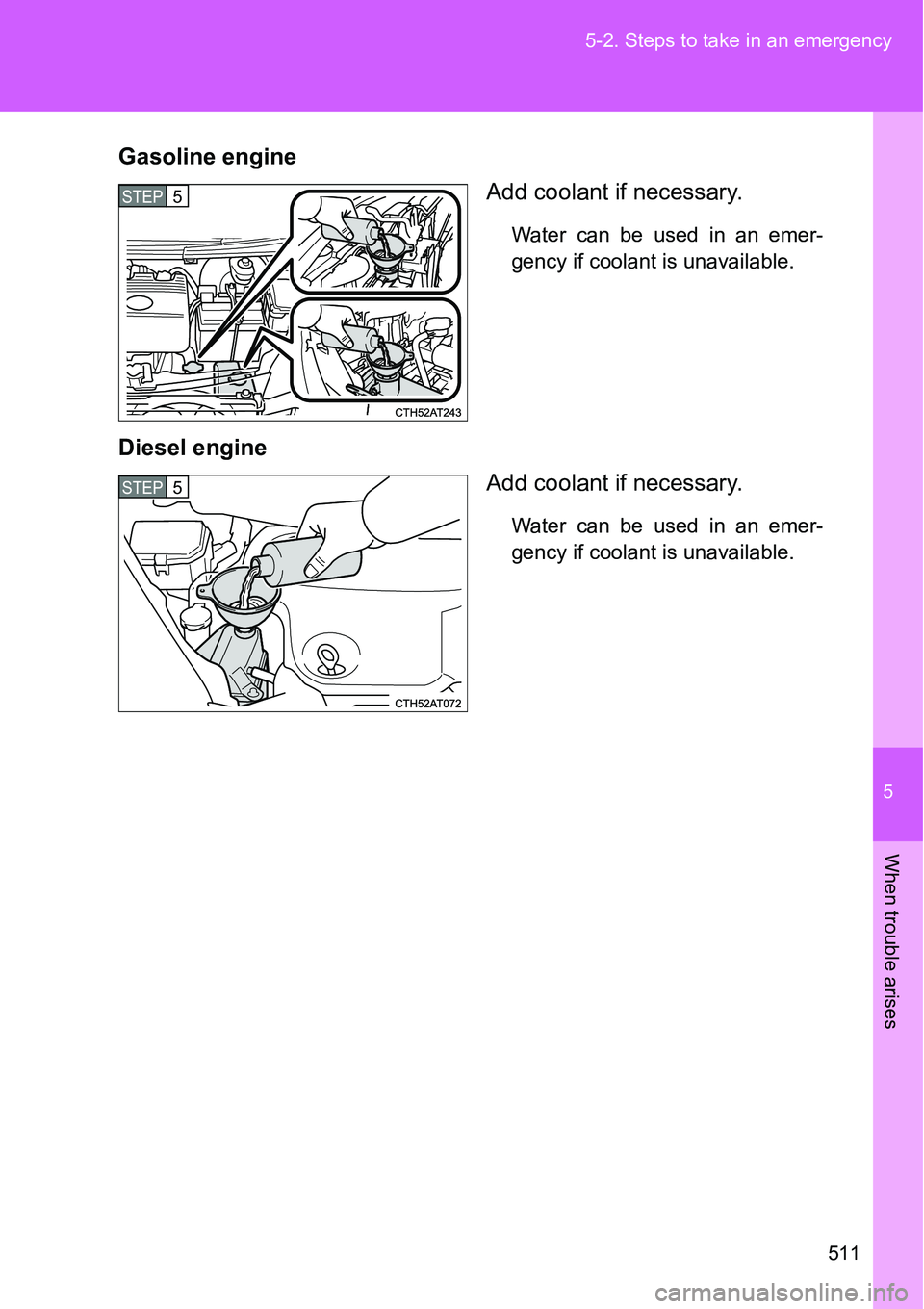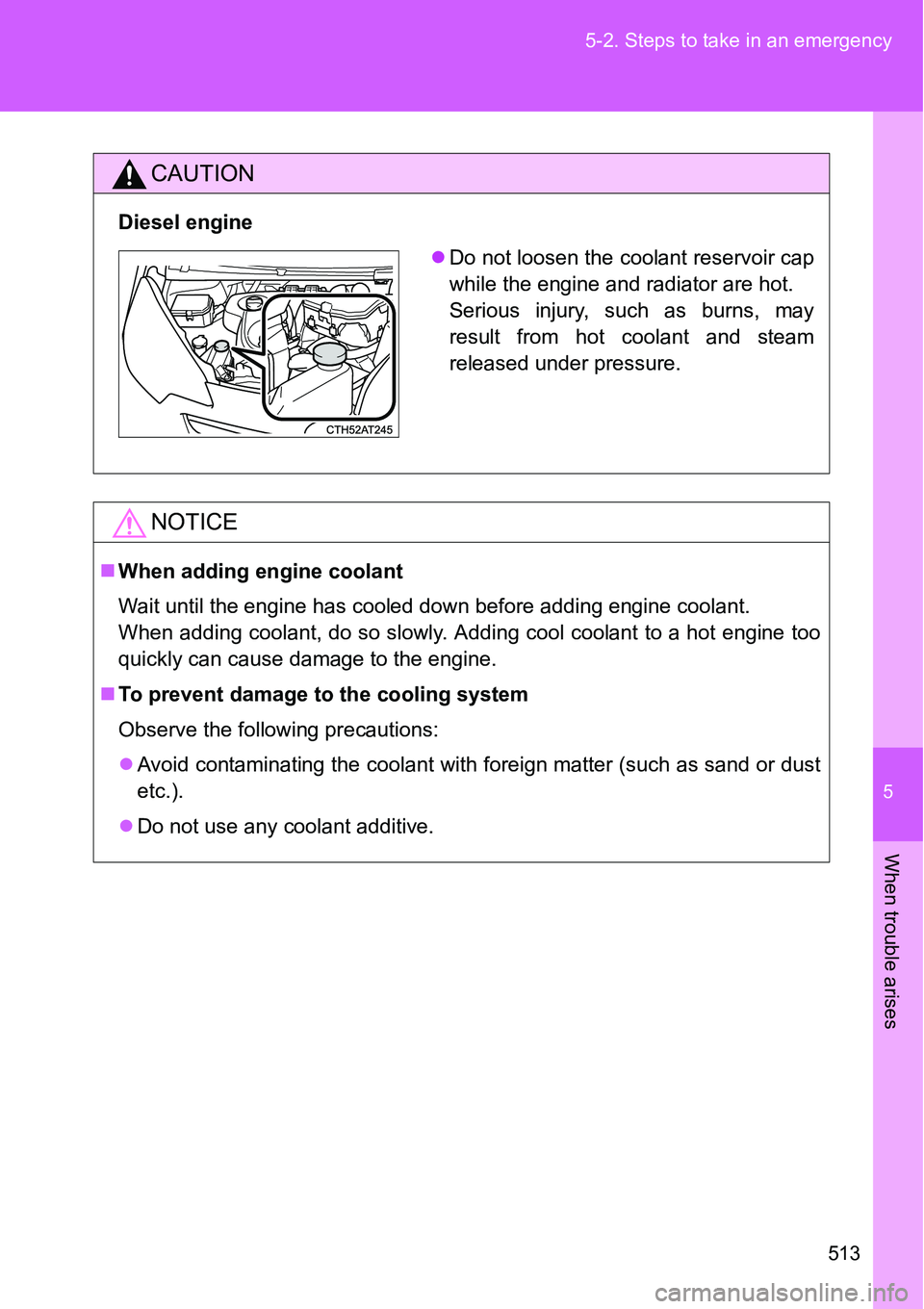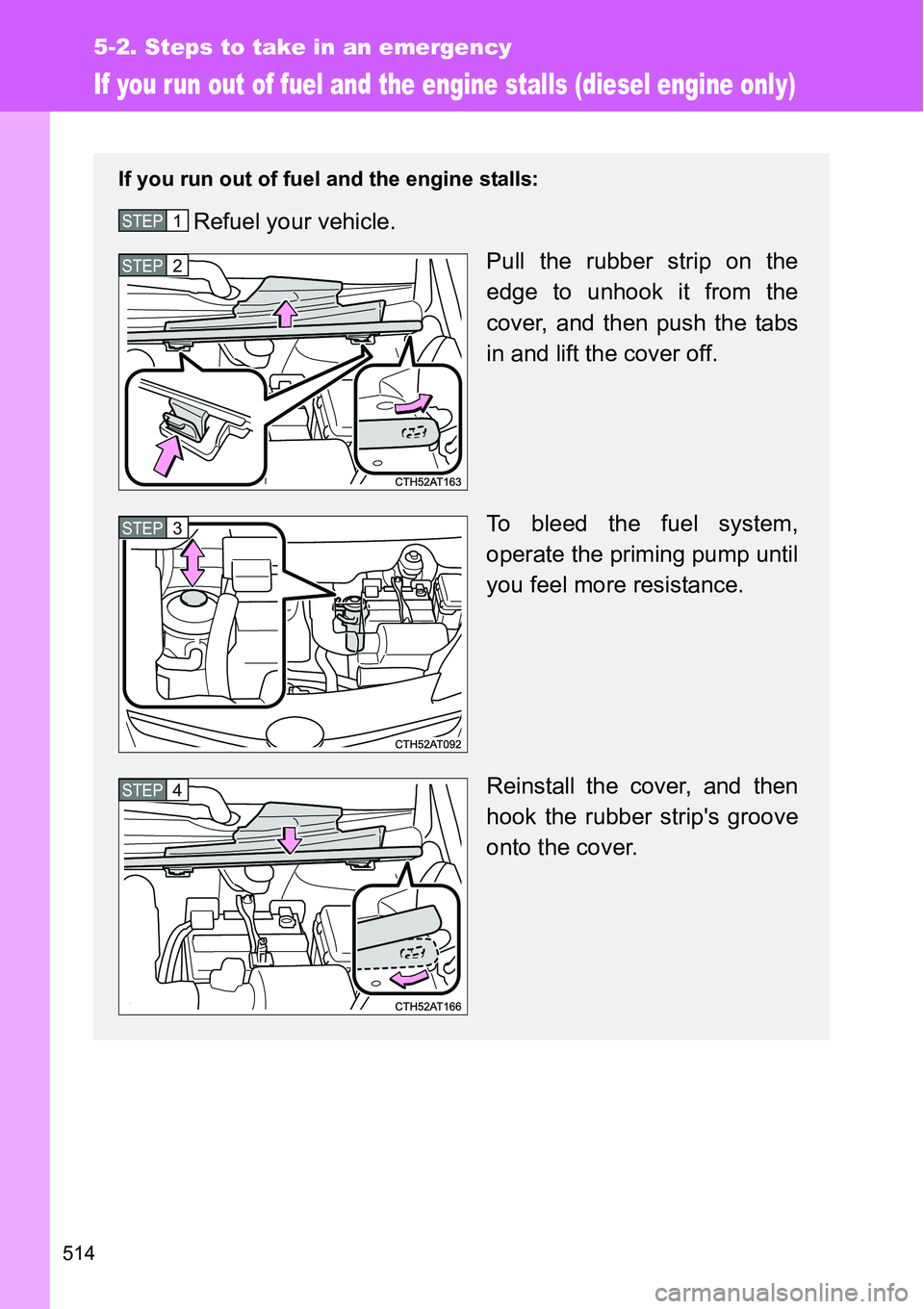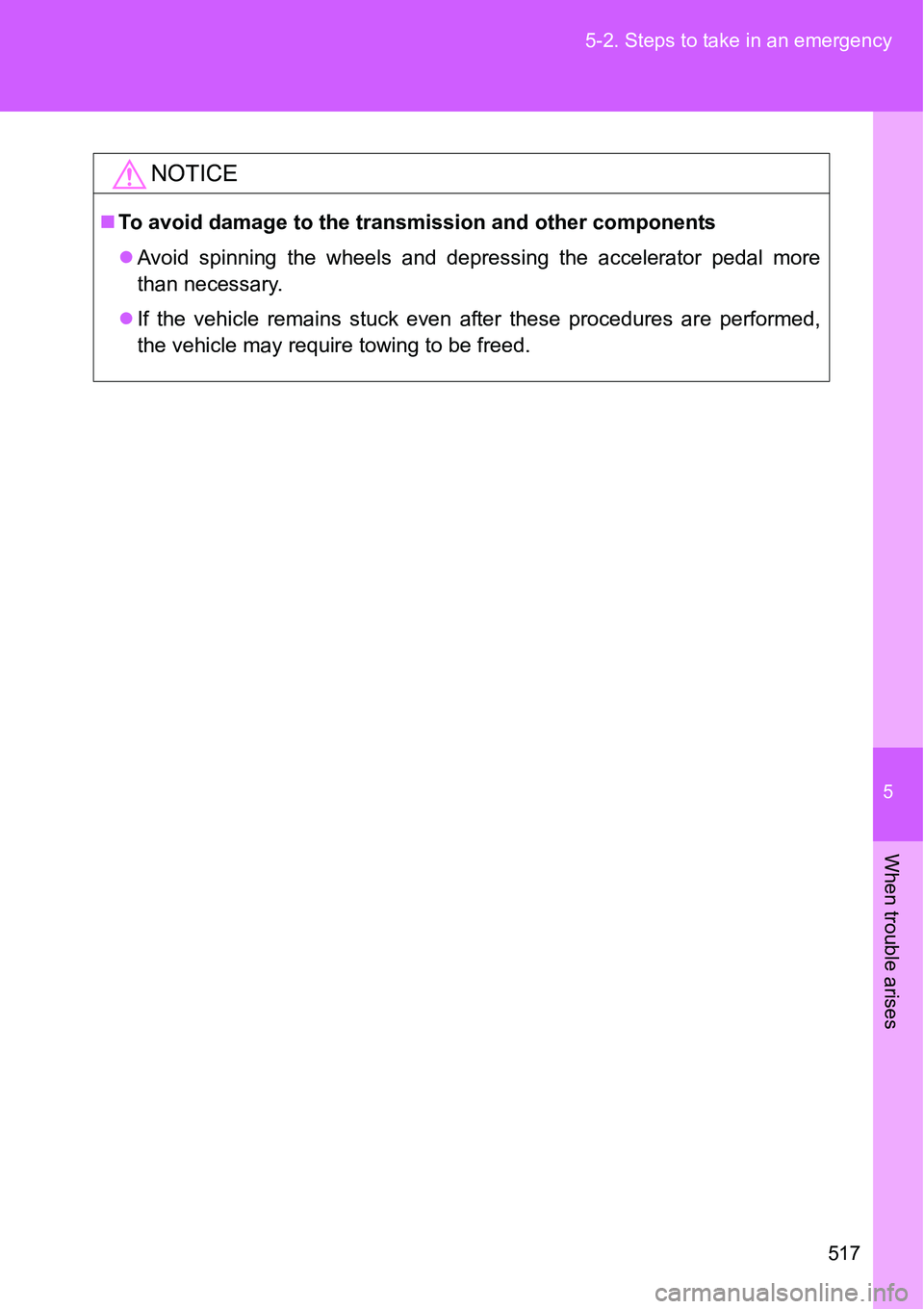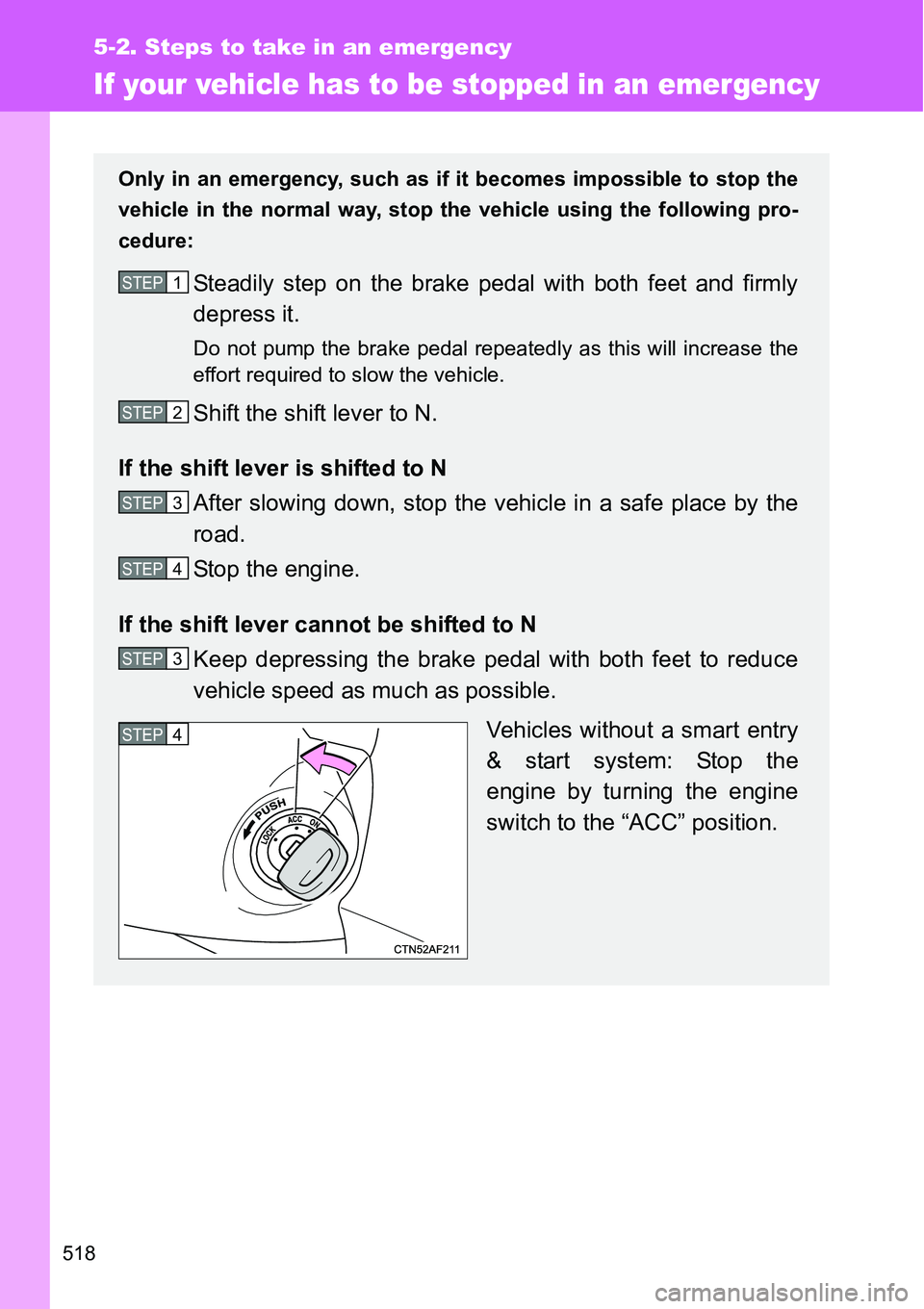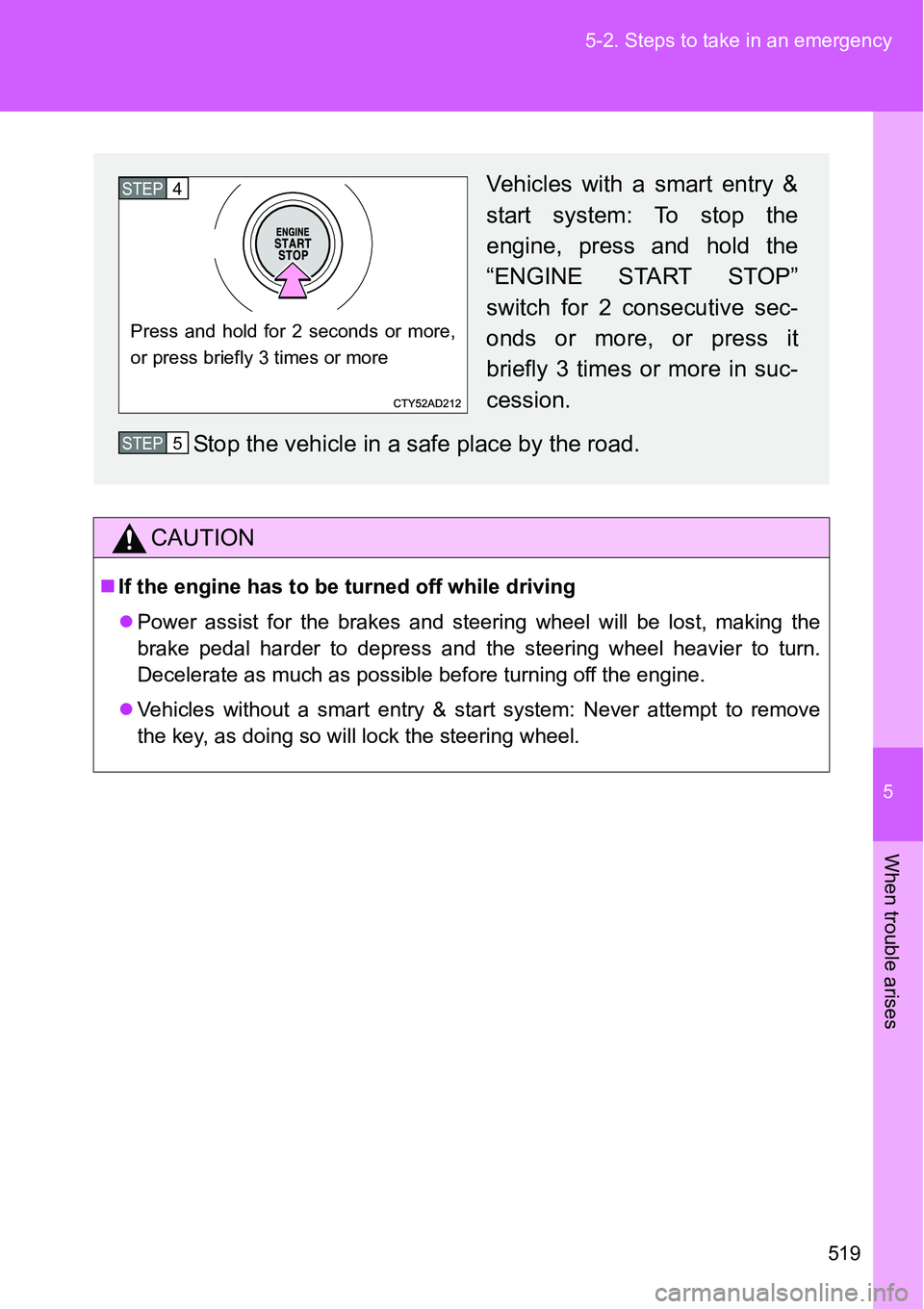TOYOTA VERSO S 2015 Owners Manual
VERSO S 2015
TOYOTA
TOYOTA
https://www.carmanualsonline.info/img/14/49152/w960_49152-0.png
TOYOTA VERSO S 2015 Owners Manual
Trending: oil type, change key battery, steering, load capacity, fuel pressure, clutch, buttons
Page 511 of 564
5
511 5-2. Steps to take in an emergency
When trouble arises
Gasoline engine
Add coolant if necessary.
Water can be used in an emer-
gency if coolant is unavailable.
Diesel engine
Add coolant if necessary.
Water can be used in an emer-
gency if coolant is unavailable.
STEP5
STEP5
Page 512 of 564
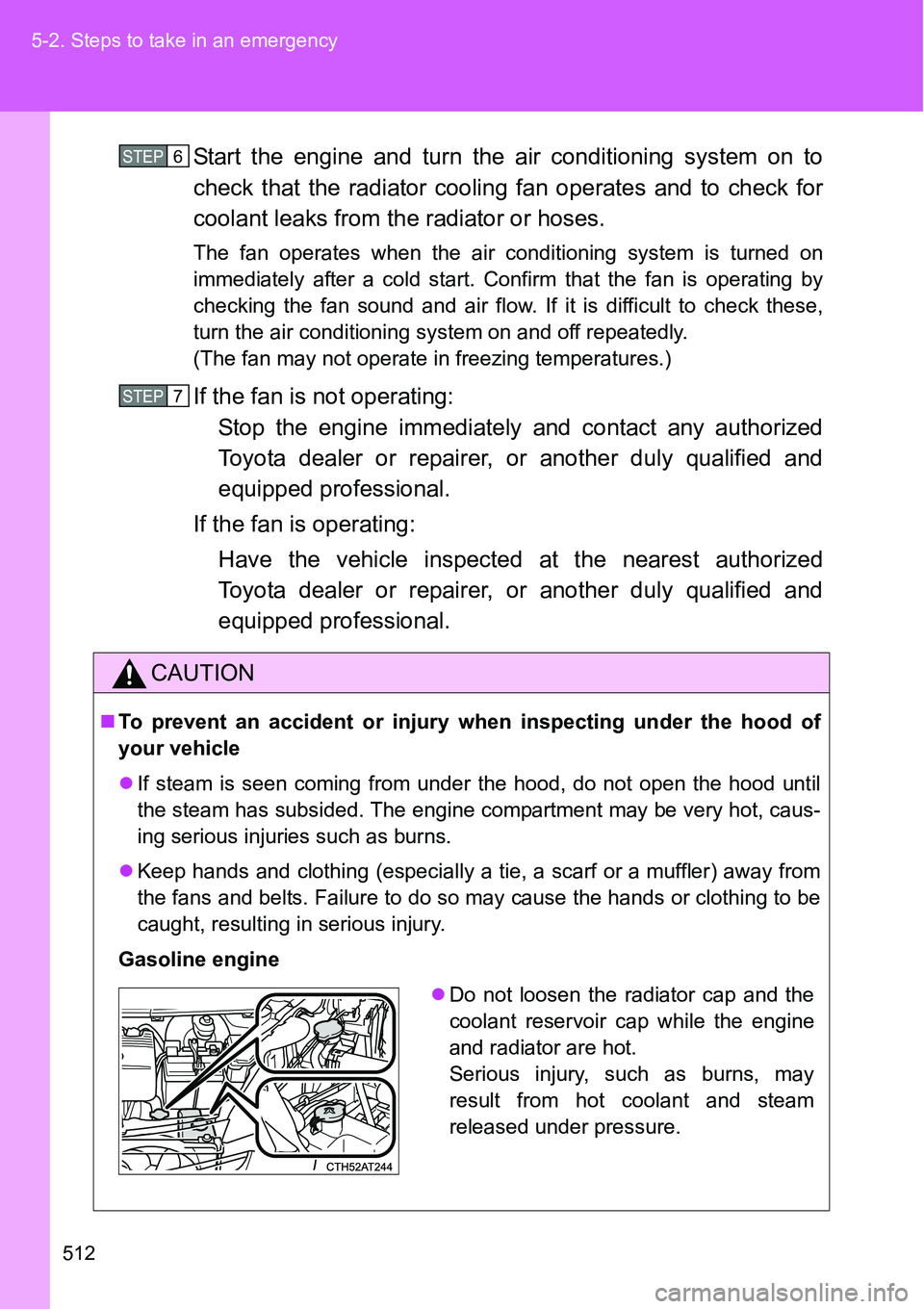
512 5-2. Steps to take in an emergency
Start the engine and turn the air conditioning system on to
check that the radiator cooling fan operates and to check for
coolant leaks from the radiator or hoses.
The fan operates when the air conditioning system is turned on
immediately after a cold start. Confirm that the fan is operating by
checking the fan sound and air flow. If it is difficult to check these,
turn the air conditioning system on and off repeatedly.
(The fan may not operate in freezing temperatures.)
If the fan is not operating:
Stop the engine immediately and contact any authorized
Toyota dealer or repairer, or another duly qualified and
equipped professional.
If the fan is operating:
Have the vehicle inspected at the nearest authorized
Toyota dealer or repairer, or another duly qualified and
equipped professional.
CAUTION
To prevent an accident or injury when inspecting under the hood of
your vehicle
If steam is seen coming from under the hood, do not open the hood until
the steam has subsided. The engine compartment may be very hot, caus-
ing serious injuries such as burns.
Keep hands and clothing (especially a tie, a scarf or a muffler) away from
the fans and belts. Failure to do so may cause the hands or clothing to be
caught, resulting in serious injury.
Gasoline engine
STEP6
STEP7
Do not loosen the radiator cap and the
coolant reservoir cap while the engine
and radiator are hot.
Serious injury, such as burns, may
result from hot coolant and steam
released under pressure.
Page 513 of 564
5
513 5-2. Steps to take in an emergency
When trouble arises
CAUTION
Diesel engine
NOTICE
When adding engine coolant
Wait until the engine has cooled down before adding engine coolant.
When adding coolant, do so slowly. Adding cool coolant to a hot engine too
quickly can cause damage to the engine.
To prevent damage to the cooling system
Observe the following precautions:
Avoid contaminating the coolant with foreign matter (such as sand or dust
etc.).
Do not use any coolant additive.
Do not loosen the coolant reservoir cap
while the engine and radiator are hot.
Serious injury, such as burns, may
result from hot coolant and steam
released under pressure.
Page 514 of 564
514
5-2. Steps to take in an emergency
If you run out of fuel and the engine stalls (diesel engine only)
If you run out of fuel and the engine stalls:
Refuel your vehicle.
Pull the rubber strip on the
edge to unhook it from the
cover, and then push the tabs
in and lift the cover off.
To bleed the fuel system,
operate the priming pump until
you feel more resistance.
Reinstall the cover, and then
hook the rubber strip's groove
onto the cover.STEP1
STEP2
STEP3
STEP4
Page 515 of 564
5
515 5-2. Steps to take in an emergency
When trouble arises
NOTICE
When restarting the engine
Do not crank the engine before refueling and operating the priming pump.
This may damage the engine and fuel system.
Vehicles without a smart entry & start system: Do not crank for more than
30 seconds at a time. This may overheat the starter and wiring system.
Start the engine. (P. 173, 182)
If the engine does not start after the above steps have been per-
formed, wait for 10 seconds and then try steps 2 and 3 again. If
the engine still does not start, contact any authorized Toyota
dealer or repairer, or another duly qualified and equipped profes-
sional.
After starting the engine, depress the accelerator pedal lightly until
the engine runs smoothly.
STEP5
Page 516 of 564
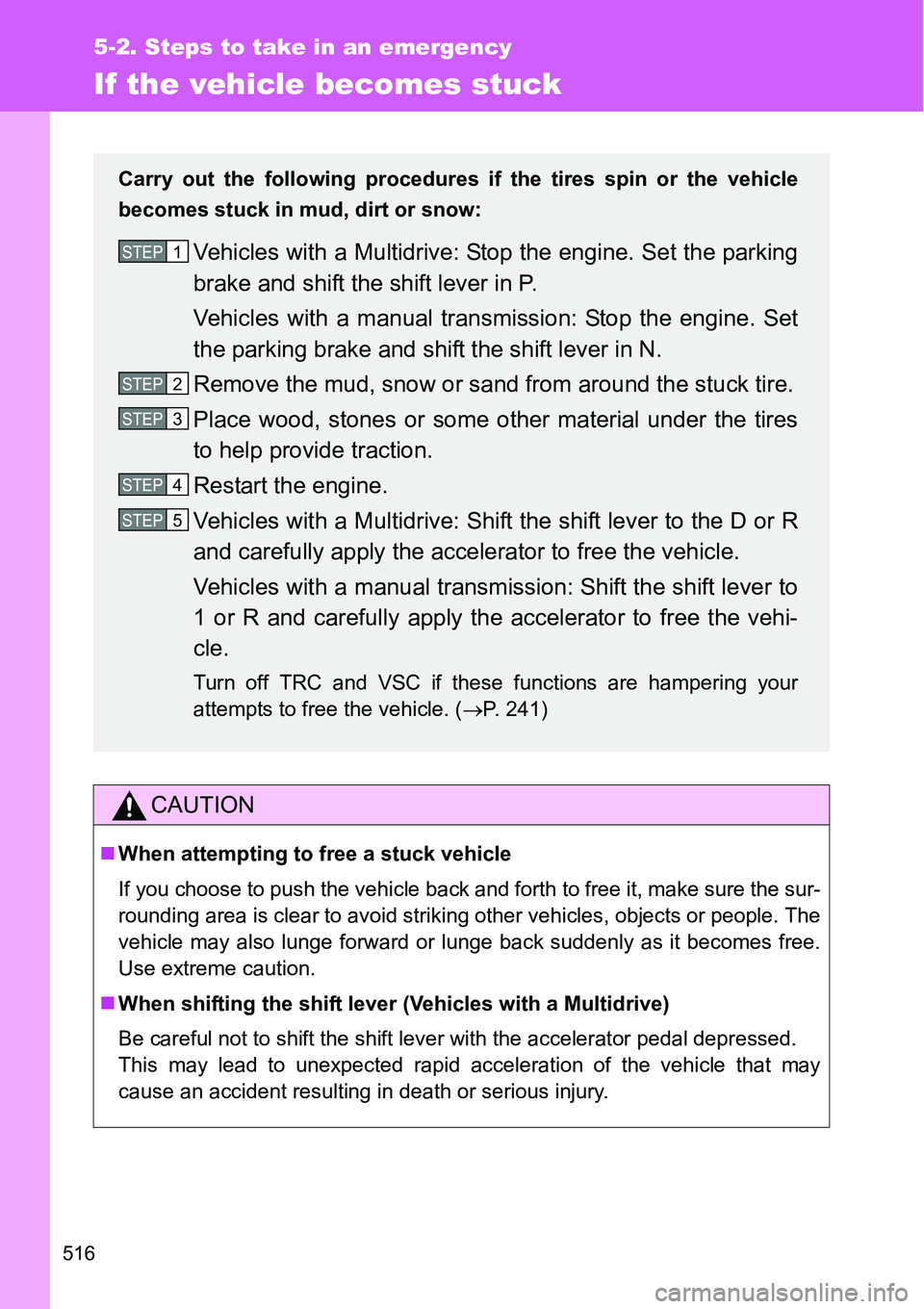
516
5-2. Steps to take in an emergency
If the vehicle becomes stuck
CAUTION
When attempting to free a stuck vehicle
If you choose to push the vehicle back and forth to free it, make sure the sur-
rounding area is clear to avoid striking other vehicles, objects or people. The
vehicle may also lunge forward or lunge back suddenly as it becomes free.
Use extreme caution.
When shifting the shift lever (Vehicles with a Multidrive)
Be careful not to shift the shift lever with the accelerator pedal depressed.
This may lead to unexpected rapid acceleration of the vehicle that may
cause an accident resulting in death or serious injury.
Carry out the following procedures if the tires spin or the vehicle
becomes stuck in mud, dirt or snow:
Vehicles with a Multidrive: Stop the engine. Set the parking
brake and shift the shift lever in P.
Vehicles with a manual transmission: Stop the engine. Set
the parking brake and shift the shift lever in N.
Remove the mud, snow or sand from around the stuck tire.
Place wood, stones or some other material under the tires
to help provide traction.
Restart the engine.
Vehicles with a Multidrive: Shift the shift lever to the D or R
and carefully apply the accelerator to free the vehicle.
Vehicles with a manual transmission: Shift the shift lever to
1 or R and carefully apply the accelerator to free the vehi-
cle.
Turn off TRC and VSC if these functions are hampering your
attempts to free the vehicle. (P. 241)
STEP1
STEP2
STEP3
STEP4
STEP5
Page 517 of 564
5
517 5-2. Steps to take in an emergency
When trouble arises
NOTICE
To avoid damage to the transmission and other components
Avoid spinning the wheels and depressing the accelerator pedal more
than necessary.
If the vehicle remains stuck even after these procedures are performed,
the vehicle may require towing to be freed.
Page 518 of 564
518
5-2. Steps to take in an emergency
If your vehicle has to be stopped in an emergency
Only in an emergency, such as if it becomes impossible to stop the
vehicle in the normal way, stop the vehicle using the following pro-
cedure:
Steadily step on the brake pedal with both feet and firmly
depress it.
Do not pump the brake pedal repeatedly as this will increase the
effort required to slow the vehicle.
Shift the shift lever to N.
If the shift lever is shifted to N
After slowing down, stop the vehicle in a safe place by the
road.
Stop the engine.
If the shift lever cannot be shifted to N
Keep depressing the brake pedal with both feet to reduce
vehicle speed as much as possible.
Vehicles without a smart entry
& start system: Stop the
engine by turning the engine
switch to the “ACC” position.
STEP1
STEP2
STEP3
STEP4
STEP3
STEP4
Page 519 of 564
5
519 5-2. Steps to take in an emergency
When trouble arises
CAUTION
If the engine has to be turned off while driving
Power assist for the brakes and steering wheel will be lost, making the
brake pedal harder to depress and the steering wheel heavier to turn.
Decelerate as much as possible before turning off the engine.
Vehicles without a smart entry & start system: Never attempt to remove
the key, as doing so will lock the steering wheel.
Vehicles with a smart entry &
start system: To stop the
engine, press and hold the
“ENGINE START STOP”
switch for 2 consecutive sec-
onds or more, or press it
briefly 3 times or more in suc-
cession.
Stop the vehicle in a safe place by the road.
Press and hold for 2 seconds or more,
or press briefly 3 times or more
STEP4
STEP5
Page 520 of 564
520 5-2. Steps to take in an emergency
Trending: USB port, warning light, lights, weight, display, water pump, oil
